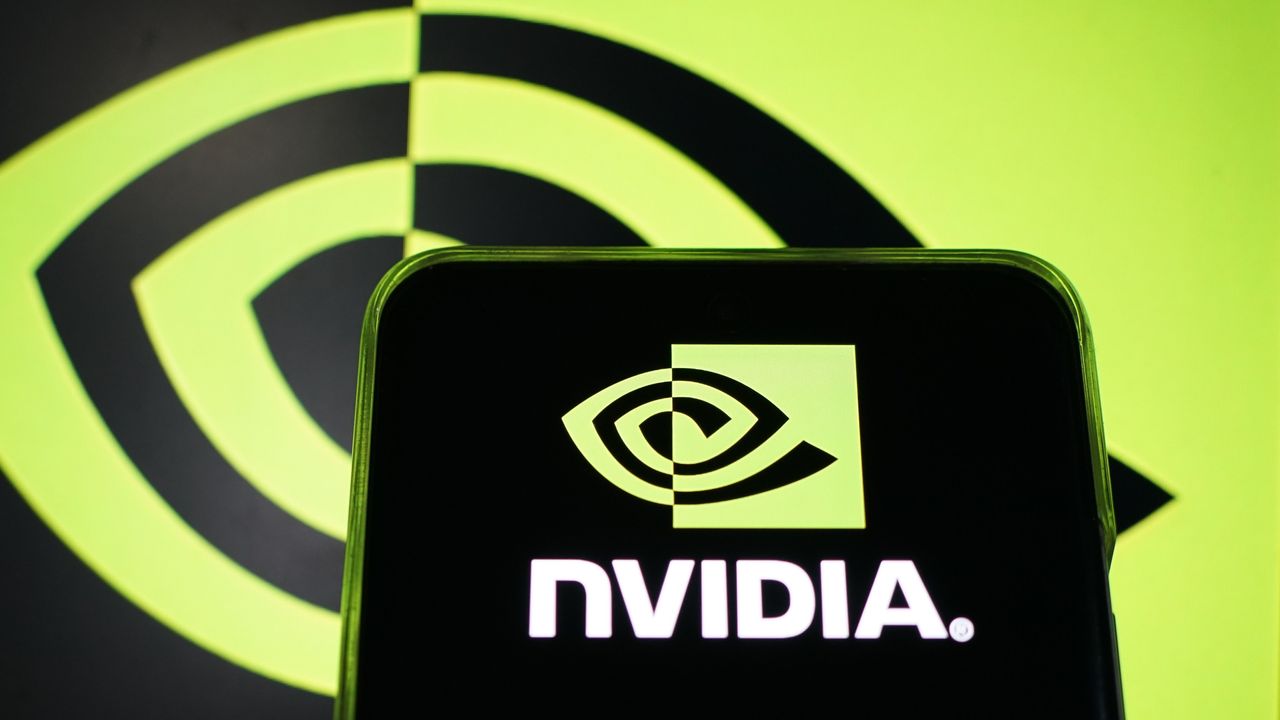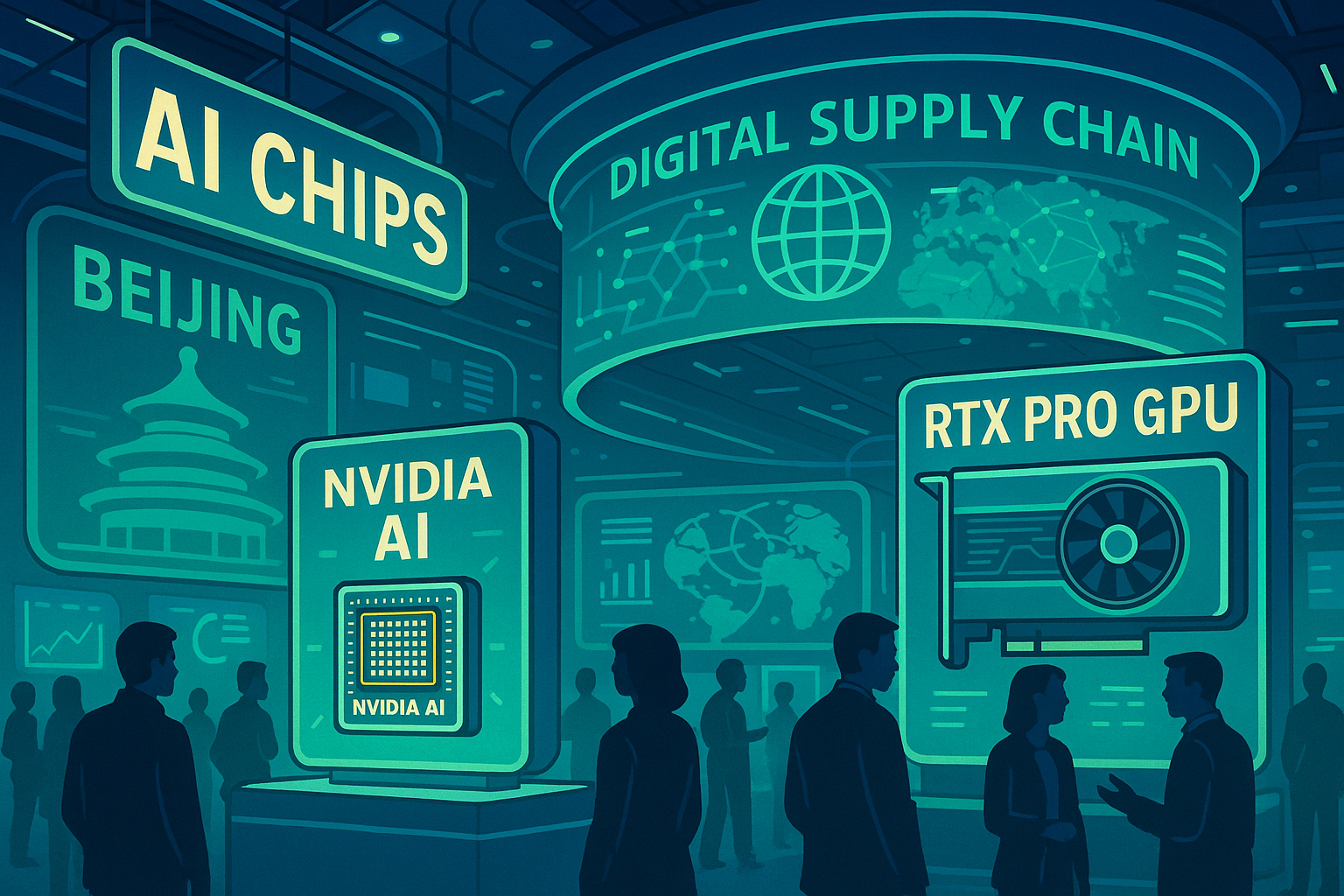Introduction
Nvidia has made global headlines with its latest breakthrough in China, marked by a significant shift in U.S.-China tech relations, major product launches tailored for the Chinese market, and praise for China’s AI leadership from Nvidia CEO Jensen Huang. Announced during the China International Supply Chain Expo in Beijing, this development has unleashed optimism across global markets and underscored the strategic importance of China in the AI and semiconductor industries.

Jensen Huang in Beijing: Praising China’s Role in AI
During his keynote remarks at the China International Supply Chain Expo, Jensen Huang described Chinese AI as a “catalyst for global progress,” emphasizing that China’s open-source approach and rapid innovation are giving every industry and nation the opportunity to join the AI revolution. Huang specifically highlighted the success of Chinese startups, including DeepSeek, and credited the country’s entrepreneurial spirit and highly skilled talent pool for its leadership in artificial intelligence.
Huang stated, “AI is transforming every industry, from scientific research and healthcare to energy, transportation, and logistics,” commending China’s dynamic digital ecosystem, which is powered by both established tech giants and a thriving network of startups. Notably, China now accounts for 50% of the world’s AI researchers, a fact that Huang linked to the country’s robust education in science and mathematics.

The Road to the Breakthrough
US Export Restrictions and Regulatory Hurdles
For years, U.S. regulations have severely curtailed Nvidia’s ability to sell its most advanced chips—such as the high-powered H100 model—in China out of national security concerns. In 2023 and again in April 2025, the U.S. government imposed and then tightened export controls, banning Nvidia from exporting some of its most sophisticated AI semiconductors to Chinese firms. These chips form the backbone of global advances in AI model training and deployment.
The embargo posed significant revenue risks: China represented approximately 15% of Nvidia’s global sales, and the ban threatened billions in potential revenue for the tech giant.
Diplomatic Engagements and Trade Negotiations
Breakthrough came after intensive trade negotiations and high-level meetings between Nvidia’s leadership, U.S. policymakers, and Chinese officials. Huang’s diplomatic visits to Washington and Beijing were instrumental. The compromise: Nvidia could resume sales of its H20 AI chips—specifically designed to comply with export restrictions—to Chinese buyers. U.S. authorities also greenlit the development and launch of a new, fully compliant GPU—the RTX Pro—for the Chinese market, focused on supporting AI-driven applications in logistics and smart factories.
Product Resumptions and Launches
H20 AI Chip: Nvidia’s H20 has become the most advanced AI chip legally accessible in China. Its resumption addresses pent-up demand among Chinese tech firms such as ByteDance, Alibaba, and Tencent, who collectively ordered $16 billion worth of Nvidia chips in early 2025 alone.
RTX Pro GPU for China: Huang announced the imminent release of the RTX Pro GPU, tailored for China’s regulatory environment. This chip is positioned as “ideal for digital twin AI applications in smart factories and logistics”—sectors in which China is a global leader.
Deliveries for these products are expected to begin shortly, with Nvidia filing all necessary applications and U.S. authorities assuring fast-track approval.
Global Market Impact
Tech Stock Rally
The announcement of Nvidia’s new access to China and the RTX Pro chip launch triggered sharp rallies across global tech markets:
Nvidia’s stock surged 4.47% in pre-market trading after the news, hitting new record highs and briefly propelling the company’s market value over $4 trillion—making it the world’s most valuable publicly traded company.
Nasdaq and Hong Kong tech indices responded positively, reflecting renewed investor confidence in the health of global supply chains and the AI chip trade.
This surge also benefited semiconductor rivals like AMD and major supply chain partners, with tech shares posting broad gains worldwide.
Implications: China’s Ongoing Role in Global Tech
- Supply Chain Centrality
China remains vital in global tech supply chains—not only as a manufacturing hub but also as a rapidly growing consumer and innovator in AI applications. Nvidia’s renewed engagement in China reinforces the country’s role in advancing worldwide AI innovation and industry transformation—particularly in smart infrastructure, computing, logistics, and research.
AI Ecosystem Advancements
Beyond hardware, the momentum will empower Chinese firms to advance their AI capabilities, develop new use cases, and support the global AI research community. Huang’s acknowledgment of Chinese AI startups and researchers underlines the collaborative potential ahead.
Conclusion
Nvidia’s China breakthrough is a defining moment for both the company and the broader technology landscape. Praising China’s AI sector as a catalyst for global advancement, Nvidia has not only reopened a multi-billion-dollar market but has also set the stage for deeper cooperation and innovation in AI and digital supply chains. The resulting market euphoria and strategic partnerships are poised to shape the future of technology well beyond 2025.

